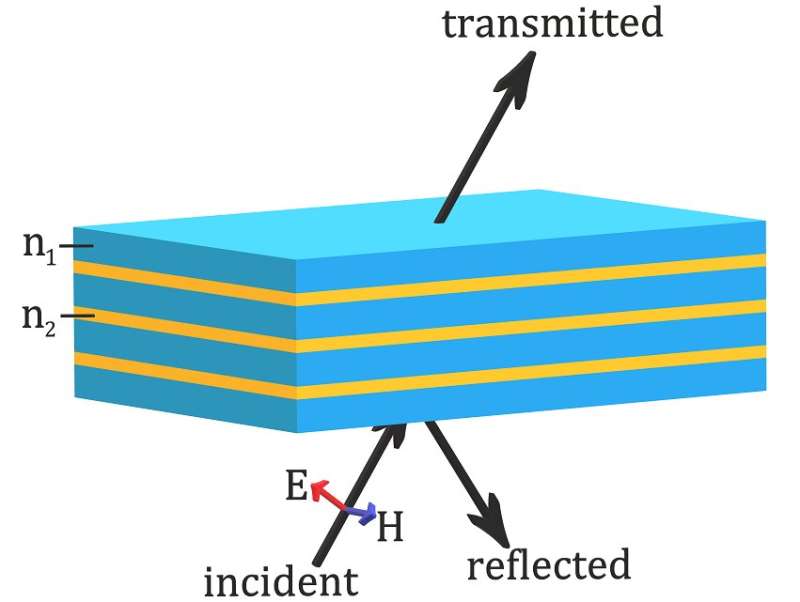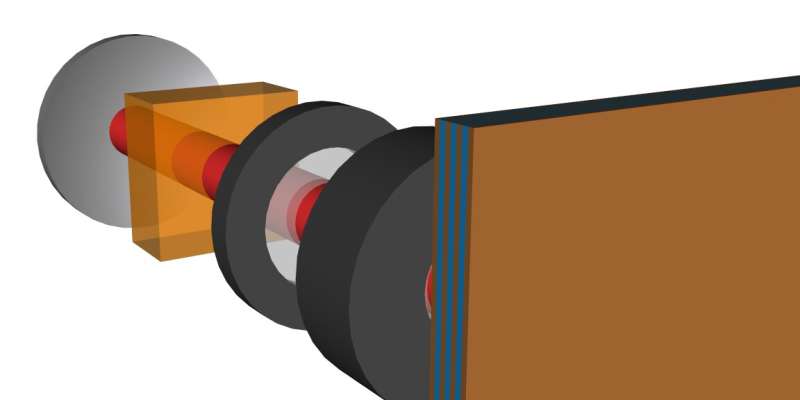
Over the past few years, physicists and engineers worldwide have developed a growing number of advanced optical technologies and photonic devices, which can be used to emit, detect or manipulate light. The ability to easily control the coherence properties of emitted light beams, however, would open exciting new possibilities for these systems, enabling their use for various other applications.
Researchers at Tampere University and University of Eastern Finland theoretically demonstrated a strategy that could grant exceptional control over the coherence of light beams emitted by lasers. This strategy, introduced in a paper published in Physical Review Letters, is based on the use of an enhanced epsilon-near-zero (ENZ) mirror, a known metamaterial (i.e., synthetic composite with properties that are not generally found in natural materials).
"Our study was a direct result of a national collaboration effort that begun in 2019, under the Academy of Finland flagship project Photonics Research and Innovation (PREIN)," Matias Koivurova, one of the researchers who carried out the study, told Phys.org. "I studied the coherence of light during my PhD at the University of Eastern Finland, and as soon as I graduated, I moved to work at Tampere University under the flagship project. One of the points of the collaboration was to study how exotic matter, such as epsilon-near-zero (ENZ) materials, affect the coherence properties of light."
After he familiarized himself with the basic properties of metamaterials, Koivurova started exploring the idea that they could be enhanced by alternating films of an ENZ material with films of dielectric materials (i.e., insulating materials that can transmit electricity without conducting it). His findings led to the realization of a new, enhanced ENZ material, dubbed eENZ.
The new study by Koivurova and his colleagues builds on this previous work, by theoretically demonstrating the potential of the eENZ material they created. Ultimately, it provides an initial example of how the new material could be used to enhance photonic technologies.

"The theoretical basis of our study is simple," Koivurova explained. "We start with some initial guess for the electric field inside a laser cavity. Then, we numerically propagate it between the cavity mirrors, taking the polarization of the field into account. By investigating both polarizations for several initial guesses, we were able to construct the correlation functions for the output light."
Through a series of theoretical calculations, Koivurova and his colleagues showed that the insertion of an eENZ mirror inside a laser cavity could enable significant control over the coherence of the light beam emitted by the laser. Notably, the control achieved over the coherence properties of the light beam appears to be truly exceptional, theoretically enabling the switching of the light between completely incoherent (e.g., light from an incandescent bulb) and entirely coherent (e.g., a laser beam) within a single device.
"These properties have been thought of as mutually exclusive before, except for some special cases," Koivurova said. "Moreover, our study demonstrates that eENZ can be used without switching to construct very high-quality lasers with nearly arbitrary cavity parameters."
In the future, the recent study carried out by this team of researchers could potentially simplify the design and development of lasers, while also reducing the cost of their fabrication. In addition, it could pave the way towards the development of new illumination and imaging devices that emit light beams with a controllable coherence.
So far, the results gathered by Koivurova and his colleagues are merely theoretical. In their next studies, they thus plan to fabricate eENZ mirrors and characterize them, to test their hypothesis in real-world experiments.
"After finding the optimal recipe for fabrication, we will experimentally showcase their properties and later build a prototype laser around the material," Koivurova added. "We already have several samples awaiting characterization and we are very excited to explore this further."
Matias Koivurova et al, Metamaterials designed for enhanced ENZ properties, New Journal of Physics (2020). DOI: 10.1088/1367-2630/abb387
© 2021 Science X Network
Citation: A strategy that could enable control over the coherence properties of light emitted by lasers (2021, October 29) retrieved 29 October 2021 from https://ift.tt/3vX2NOX
This document is subject to copyright. Apart from any fair dealing for the purpose of private study or research, no part may be reproduced without the written permission. The content is provided for information purposes only.
"strategy" - Google News
October 29, 2021 at 08:59PM
https://ift.tt/3vX2NOX
A strategy that could enable control over the coherence properties of light emitted by lasers - Phys.org
"strategy" - Google News
https://ift.tt/2Ys7QbK
https://ift.tt/2zRd1Yo
Bagikan Berita Ini














0 Response to "A strategy that could enable control over the coherence properties of light emitted by lasers - Phys.org"
Post a Comment